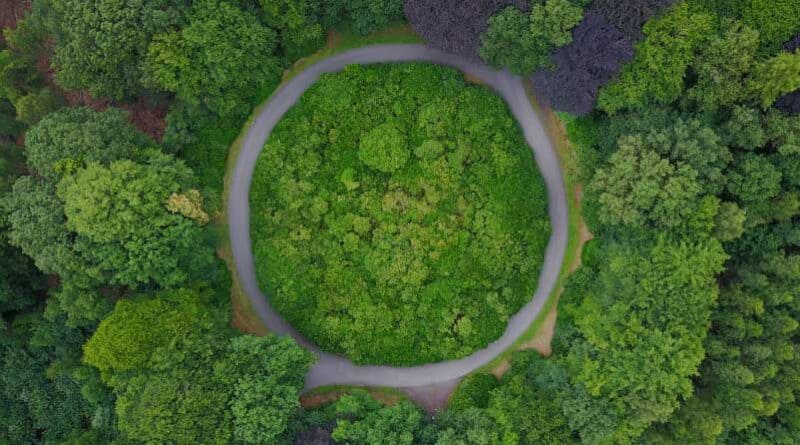Government launches Ireland’s first Whole of Government Circular Economy Strategy
The Minister of State with responsibility for the Circular Economy at the Department of the Environment, Climate and Communications, Ossian Smyth TD, has launched Ireland’s first Whole of Government Circular Economy Strategy.
In a circular economy, waste is minimised. Products are kept in use for as long as possible, through design, repair and reuse. When a product has reached the end of its life, its parts are used again and again – to create further useful products.
Minister Smyth said: “The days of extracting virgin natural resources, making things with them and then throwing them away must come to an end. The transition to a circular economy has a key role to play in climate action. 45% of our emissions are directly related to producing goods. Reducing the quantity of natural resources that we use and waste also reduces pressure on the quality of our air, soils and water and creates sustainable employment around the country.
“We all understand how saving energy and being energy efficient are critical for the climate. Now, we need to think this way about our material resources, like food, metals, plastic, concrete. A circular economy shows us how we can do this. This new strategy provides a really important policy signal across the public and private sectors that circularity belongs at the heart of sustainability.”
The strategy was the subject of a public consultation early in 2021 – one of a series of consultations undertaken since early 2020 in this area. Public feedback was strongly supportive of moving towards a circular economy.
The strategy will address a policy gap that exists in Ireland’s national policy framework. It sets out a vision for Ireland’s transition to circularity; explaining the concept of the circular economy, describing what initiatives are already happening, what opportunities are available and how Government will drive the changes required.
The strategy will:
- Demonstrate public sector leadership, using policy tools such as green public procurement as well as supporting circular economy practices across the entire public sector
- Develop and implement an education and awareness campaign – for individuals, households, communities, and the public and private sectors
- Identify priority sectors for the development of sectoral circular economy roadmaps
- Convene a consultative advisory group, from amongst stakeholders, to input into policy development and implementation
- Establish an interdepartmental working group to oversee the integration of circular economy policies and practices across public policy
Subsequent iterations of the strategy will include more detailed measures and sectoral roadmaps for priority areas such as construction, consumer goods, transport, procurement, agriculture and food. Measures, including targets, for these sectors will be developed in consultation with stakeholders across public and private sectors, as well as environmental, community and social enterprise representatives.
New Circular Economy Programme from the EPA
Today also saw the launch of a new Circular Economy Programme from the EPA (Environmental Protection Agency). The programme has been devised to support the Government’s circular economy policy agenda. It will incorporate the previous National Waste Prevention Programme will be the driving force for Ireland’s move to a circular economy by businesses, householders and the public sector.
The launch will set the scene for the next six years of our journey away from waste disposal and treatment to ensuring that the extraction and consumption of raw materials is reduced, and that waste is prevented and reduced at all stages of production. At the same time, this economic model will support the growth of our economy in a sustainable way.
Laura Burke, Director General of the EPA, said: “The circular economy is at the core of the transition to a low-carbon economy and has a critical role to play in achieving climate targets at national and global levels. Influencing consumption and production patterns is critical for controlling greenhouse gas emission levels, as well as reducing waste generation, and will be an integral part of the EPA’s Circular Economy programme.
“The Circular Economy Programme will work closely with stakeholders, including the Department of the Environment, Climate and Communications, to realise the potential of circularity as a climate action.”
Showcasing the Circular Economy in action
The Whole of Government Circular Economy Strategy and the EPA’s Circular Economy Programme were launched at a special event at TU Dublin (Grangegorman campus), which observed all Covid-19 restrictions and protocols. To mark the launch, a number of TU Dublin projects, which embrace the circular economy and serve as exemplars, were showcased. Each of these projects represents one of TU Dublin’s three pillars of Sustainability, using approaches that incorporate:
- pre-design principles to calculate embodied carbon, using a top-down approach in public sector by leading through best-practice (PLANET)
- a bottom-up innovation responding to local needs through the reuse of recycled waste materials to assist children (PEOPLE)
- an inside-out exploration of the potential for economically and environmentally sustainable energy alternatives (PARTNERSHIP)
Prof David FitzPatrick, President TU Dublin, said: “As Ireland’s first Technological University, sustainability is at the centre of our mission. Our Strategic Plan is founded upon three of the UN Sustainable Development Goal pillars – People, Planet, and Partnership. Our commitment to deliver on a sustainable future for Ireland, and the world, through our graduates and the experience we offer at TU Dublin is evident across our ongoing initiatives showcased here today. In addition, the appointment of Ireland’s first Vice President of Sustainability as a member of the University Executive Team (UET) is a significant commitment to ensuring we deliver on a better world together.”

